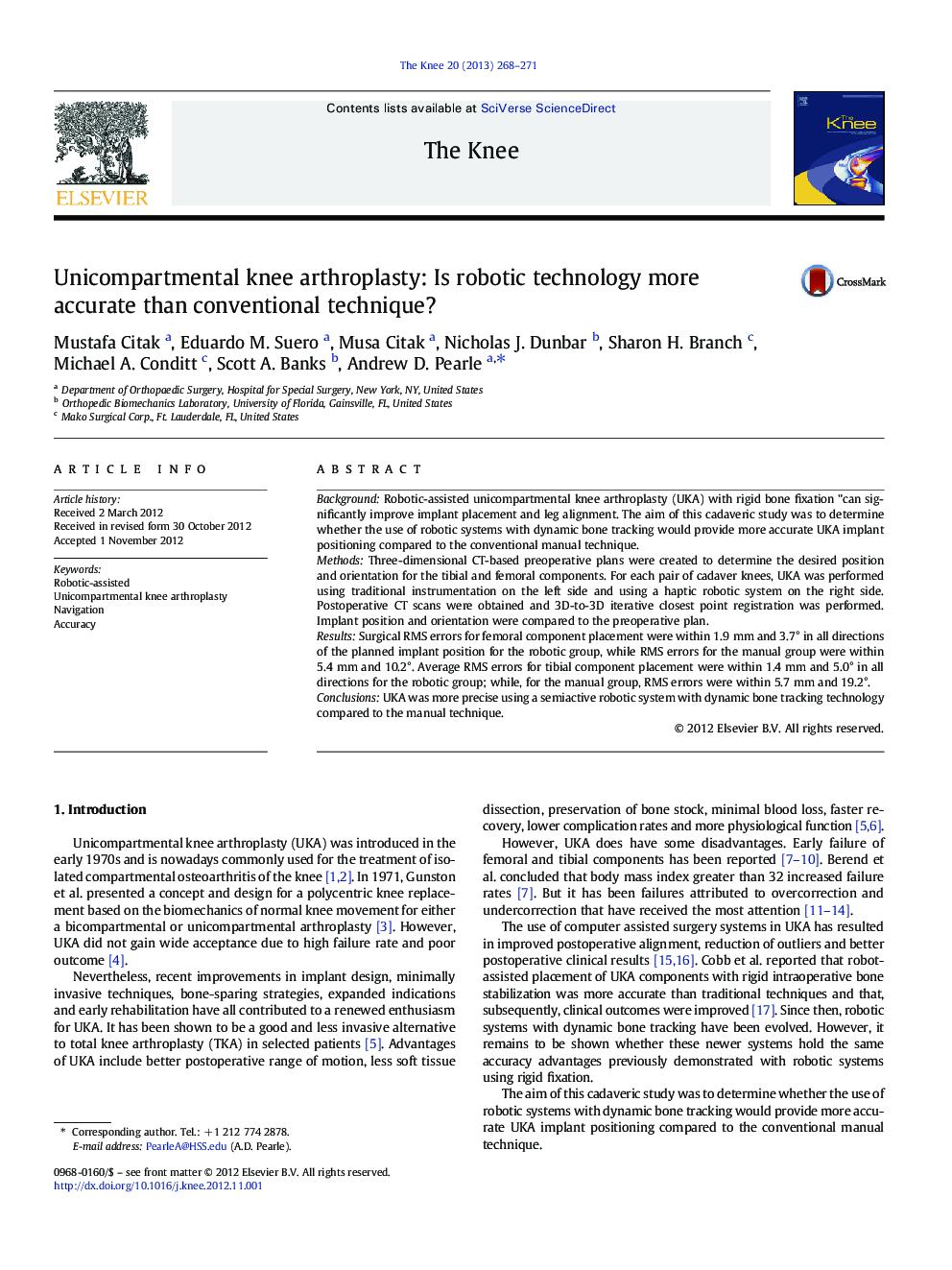| کد مقاله | کد نشریه | سال انتشار | مقاله انگلیسی | نسخه تمام متن |
|---|---|---|---|---|
| 4077633 | 1267223 | 2013 | 4 صفحه PDF | دانلود رایگان |

BackgroundRobotic-assisted unicompartmental knee arthroplasty (UKA) with rigid bone fixation "can significantly improve implant placement and leg alignment. The aim of this cadaveric study was to determine whether the use of robotic systems with dynamic bone tracking would provide more accurate UKA implant positioning compared to the conventional manual technique.MethodsThree-dimensional CT-based preoperative plans were created to determine the desired position and orientation for the tibial and femoral components. For each pair of cadaver knees, UKA was performed using traditional instrumentation on the left side and using a haptic robotic system on the right side. Postoperative CT scans were obtained and 3D-to-3D iterative closest point registration was performed. Implant position and orientation were compared to the preoperative plan.ResultsSurgical RMS errors for femoral component placement were within 1.9 mm and 3.7° in all directions of the planned implant position for the robotic group, while RMS errors for the manual group were within 5.4 mm and 10.2°. Average RMS errors for tibial component placement were within 1.4 mm and 5.0° in all directions for the robotic group; while, for the manual group, RMS errors were within 5.7 mm and 19.2°.ConclusionsUKA was more precise using a semiactive robotic system with dynamic bone tracking technology compared to the manual technique.
Journal: The Knee - Volume 20, Issue 4, August 2013, Pages 268–271